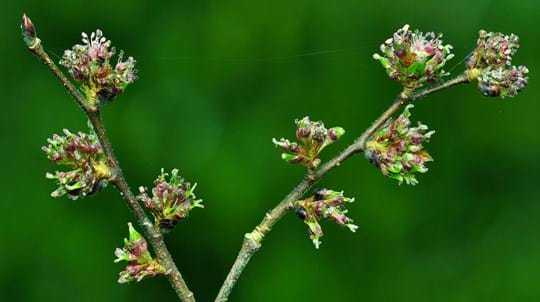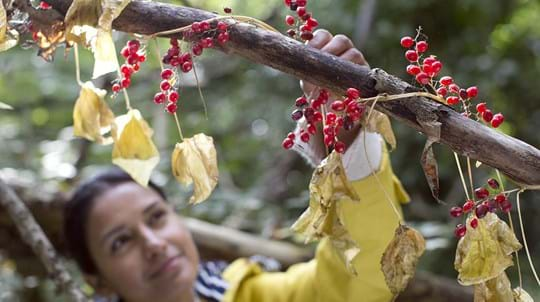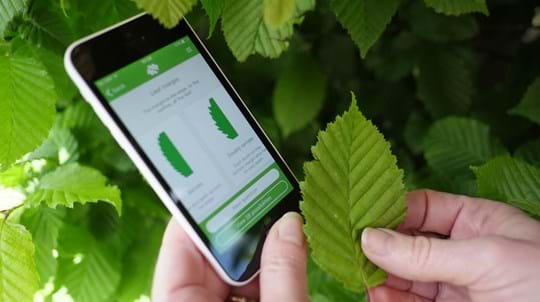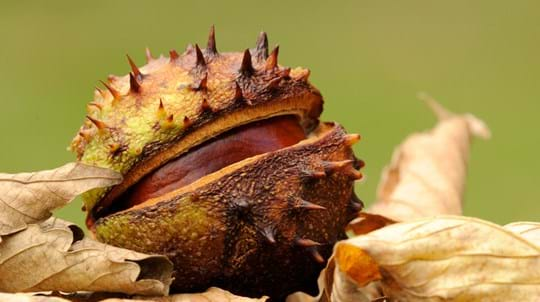
Nature's Calendar
Help monitor the effects of climate change on wildlife near you. Your records contribute to a growing body of evidence on global warming.
Add your wildlife recordings
Citizen science assistant
Have you spotted small flowers on a winter tree? These catkins have an important role in spreading tree seeds and show us that spring is on the way. Find out what they look like and why trees have them, along with where and when to spot them on five of our native trees.
Catkins are long slim clusters of tiny flowers that grow on some trees. They have small petals, or none at all.
Catkins allow the tree to reproduce. Catkins enable female flowers to be pollinated when pollen from male flowers is blown by the wind. Male catkins drop off after releasing pollen, whereas female catkins collect pollen and then release the seeds.
Once the seeds have developed, they are dispersed by the wind to avoid growing right below their parent. The exceptions are willow, which is pollinated by insects rather than wind, and sweet chestnut, which can be pollinated by either wind or insects.
Many catkins appear over winter and are easy to spot on the leafless branches. They tend to flower during spring, but it depends on the weather.
You can typically see catkins in flower from January to May, though these dates can fluctuate. Differences in their timing may be linked with climate change.
Hazel shrubs are monoecious, which means they have male and female flowers on the same plant. They can’t self-fertilise though.
Appearance: Hazel catkins look like long yellow lambs' tails and house the male flowers. Female flowers are a small vase-shaped bud with red filaments sticking out. If pollinated, these buds become the hazelnuts in autumn.
When to see: January to March
Each alder tree has both male and female flowers.
Appearance: The catkins which house the male flowers are up to 6cm long. Young catkins appear green before turning yellow and releasing pollen in February. The female flower is small and red, about 1cm long and with many hair-like structures across the surface. Once this is pollinated, it turns into the brown alder fruit or ‘cone’ which houses the seeds.
When to see: February to March
Masses of tiny seeds are released from silver birch catkins in autumn – they have tiny ‘wings’ on each side of the seed to help them travel on the wind.
Silver birch is also monoecious.
Appearance: Male catkins are 4-5cm long and yellow-brown in colour. They hang in groups of two to four at the tips of shoots, like lambs' tails. Female catkins are smaller, short, bright green and erect. Once pollinated, female catkins thicken and change colour to a dark red-brown.
When to see: March to May
The white feathery down of willow seeds helps them to float on the wind like a dandelion seed head.
White willow is dioecious, meaning male and female flowers grow on separate trees. Catkins appear in early spring.
Appearance: Male catkins are 4-5cm long while female catkins are 3-4cm long and a bit narrower than the male. After pollination by insects, female catkins lengthen and develop small capsules, each containing tiny seeds encased in white down.
When to see: April to May
Oaks hold both male and female flowers on the same tree.
Appearance: Catkins appear less densely packed than those on other trees. Male catkins are yellow, each around 6cm long and grow in rows, hanging down from the branch in a curtain. The female flowers are tiny and red, with fine filaments protruding to catch the pollen. These can be found on short stalks called peduncles and will develop into acorns by autumn.
When to see: April to May
Catkins flowering is one of 69 wildlife events our amazing volunteers record for Nature’s Calendar. This project tracks the effects of weather and climate change on wildlife across the UK – its records date all the way back to 1736!
We ask our recorders across the UK to keep an eye on catkins on their local hazel, silver birch and pedunculate oak trees. We want to know when they appear to swell and release pollen – this is their first flowering date.
By taking a few minutes to share what you see, you'll be adding to hundreds of years' worth of important data for studies worldwide. Every record is crucial and valuable. The data recorded helps us to understand the effects of climate change and other patterns in the natural environment. We couldn't do this work without you!

Help monitor the effects of climate change on wildlife near you. Your records contribute to a growing body of evidence on global warming.
Add your wildlife recordings
Trees woods and wildlife
Our A-Z guide to British trees from native species to naturalised and widely planted non-natives.

Trees woods and wildlife
All trees have clues and features that can help with identification. You just need to know what to look out for with our quick guide.

Trees woods and wildlife
Our free Tree ID app for Android and iPhone helps you identify the UK's native and non-native trees. It's an A-Z tree guide in your pocket.

Blog
Amy Lewis • 23 Aug 2019

Blog
Rachel Hoskins • 24 Jun 2019